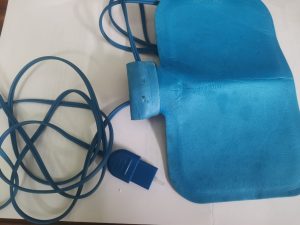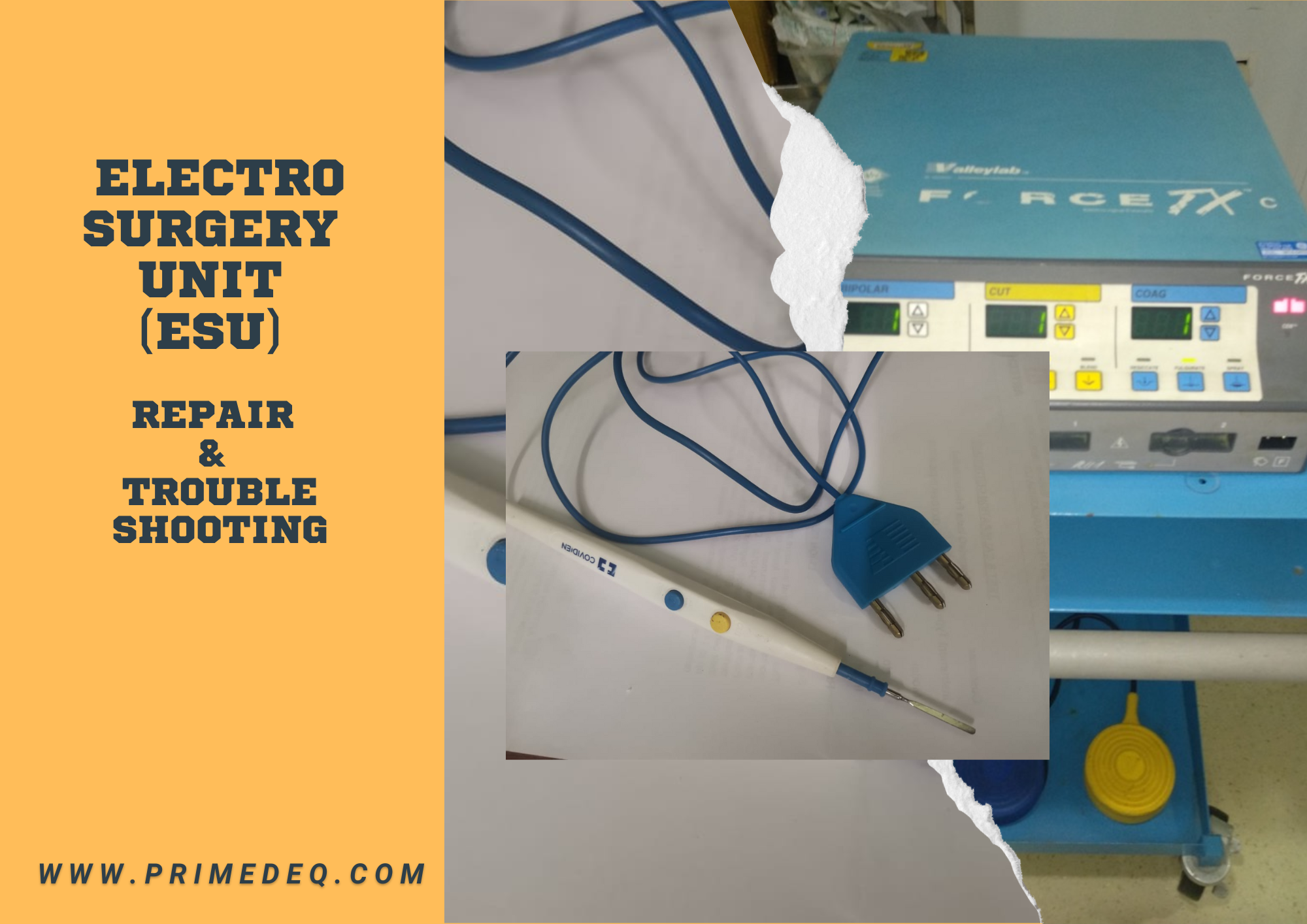
Electrosurgery is the application of a high-frequency electric current to biological tissue as a means to cut, coagulate, desiccate, or fulgurate tissue. ESU or Electro Surgery Units help in performing electrosurgery. Electrosurgical units use alternating current with the appropriate frequency to cut and coagulate tissue. The advantage of ESUs is that, at the correct frequency, an alternating current can make precise cuts without burning tissue, with limited blood loss. This article focuses on what are the common problems faced while using ESU and Electro Surgical Units Repair.
Electrosurgery is commonly used in dermatological, gynecological, cardiac, plastic, ocular, spine, ENT, orthopedic, urological, neuro- and general surgical procedures as well as certain dental procedures.
Cautery, or electrocautery, on the other hand, is the application of heat to tissue to achieve coagulation. In an electrocautery device, a direct current is typically used to heat a piece of metal on the tip of a handpiece, which is then used for cauterization.
A cautery machine is different from an Electro Surgical Unit or ESU, even though these terms are often interchangeably used. Check out the following blog to learn the differences between electro surgery units and cautery units.
Difference between Electro Surgery Unit (ESU) & Cautery Machine
How does an Electro Surgical Unit (ESU) work?
Electrosurgery is performed using a power supply generator, also referred to as waveform generator, and a hand piece including one or several electrodes. The electrodes are sometimes referred to as an RF Knife, or “Bovie knife” after the inventor. Bipolar electrosurgery has the outward and return current passing through the handpiece, whereas monopolar electrosurgery returns the current through a plate normally under the patient.
Main Components of Electro Surgical Unit (ESU)
The main components of an ESU are:
1. High Frequency (or wave) generator – takes in power supply at 50Hz and converts into high frequency output.
2. Logic/ Control Board – Helps decide what is the function to be performed such as, cut or coagulate. Based on the settings the RF output is generated.
3. Power output or RF Baord – If it is a dampened waveform, it will coagulate tissue and stop bleeding. If it is undampened waveform it will ablate and cut the tissue.
4. Foot switch – Is used by the surgeon to operate the ESU, essentially completing the electric circuit.
5. Electrodes / Patient plates – All electrosurgery techniques require two connections to the patient, the active electrode (or pen) and the reference electrode (dispersive or ground electrode). For monopolar electro-surgery, the reference electrode is placed under the patient (called patient plate) and the active electrode is held in the surgeon’s hand. In bipolar ESU both reference and active electrode are held by the surgeon like a forcep.
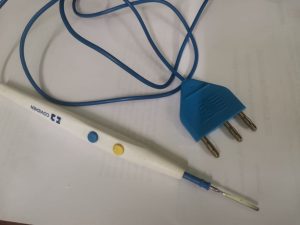
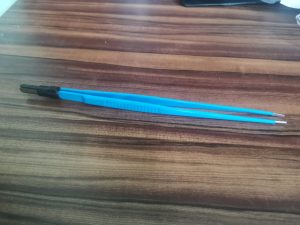
The wave generator, control and RF board are all housed in boxed unit with a front-end panel displaying settings and alarms etc. The foot switch and electrodes are connected to this unit.
Common Electro Surgical Units Repair Issues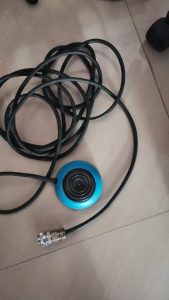
Here, we will talk about common problems faced while using an Electro Surgical Unit (ESU) and possible causes. Most of the Electro Surgical Units repair issues can be grouped under the following 3 main categories:
-
Electrical issues in ESU
- Device is not turning ON – Check whether power switch in ON. If yes, check for faulty power cable or power socket or blown fuse.
- Continuous interference – Check for faulty earthing / ground connection or if filtering system in the monitor is faulty.
- Intermittent interference – Intermittent interference or metal-to-metal sparking is observed when ESU is switched on – Check for any loose connections, check if any cords/ cables are damaged/ exposed or touching each other. Lower the power settings and check if the interference reduces.
- Electric shocks – There may be wiring problems.
-
Accessories Problems in ESU
- Equipment is ON, but shows error – Foot switch or front panel buttons may be stuck. Check both footswitch and front panel buttons, disconnect and switch on the system again. There could be probe, patient plate or cable malfunction. Check if all connections are tight, all accessories are clean and making proper contact.
- Equipment is ON, but output is weak or intermittent – Accessory may be malfunctioning (electrode tip may be dirty and not making proper contact, wiring may be faulty), not connected properly or power supply setting may be low.
-
Patient Safety issues with ESU
- Pacemaker or Internal Cardiac defibrillator interference – Immediately stop the surgical procedure, provide emergency care to the patient and consult implant supplier for proper instructions.
- Skin burns – One of the frequently reported problems is skin burn, often at the return electrode site. Partial or complete detachment of the electrode pad from the patient is the most common cause. Check and place the dispersive electrode at a spot with good blood flow and less patient body weight pressure on (e.g. buttocks is not a good place).
Reliable Electro Surgical Units Repair Services in India
Should you face any of the above problems with your Elecro Surgical Unit (ESU), contact us at 7019759765 or 8971223957! PrimedeQ can assist you with board repair/ replacements or any other types of electro surgical units repair and general servicing. We also supply ESU accessories and spares.

PrimedeQ is an e-Marketplace for buying, selling, renting, servicing and spares of medical equipment. We offer all types of used / refurbished medical equipment , including Electro Surgical Unit, Ophthalmology equipment, endoscopes, OT equipment, Laparoscopic Equipment, Lab equipment, X-Ray, TMT, ECG, anesthesia machine, ultrasound machines etc. We offer repair services for all types of medical equipment including ESUs, Lab equipment, microdebrider, laparoscope , x-ray tube, rigid and flexible endoscopes as well as EUS (Endoscopic Ultrasound Units) and ultrasound probe etc.

